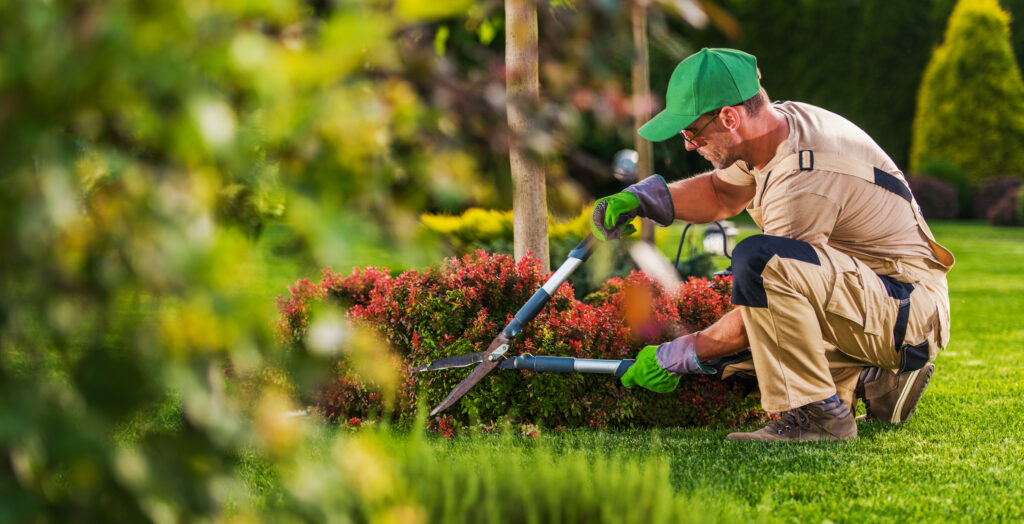The lawn care and landscaping industry continues to demonstrate remarkable resilience and growth, with the landscaping services market reaching new heights as we enter 2025. As more homeowners and commercial properties invest in outdoor spaces, landscaping companies are experiencing consistent growth in revenue and service demand.
From landscape maintenance and lawn care services to sustainable landscaping solutions, the industry is evolving to meet changing customer preferences. This landscaping industry statistics guide examines current market trends and growth opportunities shaping residential and commercial properties across the landscaping and lawn care sector.

Landscaping industry overview
As we look at the landscaping industry from a holistic point of view, we see an industry poised for sustained growth. In 2024, the industry continued to see steady gains, with a market size sitting at $159 billion, representing a 3% increase over 2023. If that trend continues, we’re looking at a $163.8 billion industry in 2025.
The landscaping services industry has enjoyed an average growth of 4% per year, so we could see even higher numbers as the year continues. Some experts put the global landscape industry growth at 6.7% CAGR over the next five years.
Thanks to its steady growth, the sector is also creating jobs. In 2024, the landscaping industry employed over 1 million people across more than 600,000 businesses in the United States.
When compared with other industries in the United States, landscaping is the third-largest in the Administration, Business Support, and Waste Management Services category. Overall, it’s the 79th-largest segment in the U.S.
These numbers are a result of multiple factors, including an increased interest in green outdoor living spaces and more disposable income.
Landscaping industry trends
As the name implies, landscape maintenance, lawn care, landscape design, and construction are the most common services provided by green industry companies. 90% of lawn care professionals also offer weed control and tree care services.
But there are some emerging landscaping services businesses are adding to their menus, including:
- Native plant species integration: Reduce air pollution, fertilizer, and pesticides with native plants. Native plants help keep away invasive insect species and require less water to maintain.
- Xeriscape services: Create outdoor spaces with low-water plants, artificial turf, and efficient irrigation practices to reduce water requirements. Xeriscape is an excellent alternative to gardens in drought-prone areas.
- Garden planning: Edible landscaping is becoming popular as homeowners seek to grow their own foods. Productive gardens require dedicated planning and maintenance, which are profitable and in-demand services.
- Showcase lawn planning: Install holiday decorations and lighting, and create beautiful spaces with specific color themes and custom designs that are perfect for events.
Landscaping and lawn care industry challenges in 2025
Although the landscape industry is a promising option for millions of workers and business owners worldwide, there are challenges to be aware of. We can break these challenges down into two categories:
Labor and economic challenges
Labor shortages are a significant threat to the industry and growth in general. A few factors contribute to this shortage, such as the low annual pay, which is less than $40,000 on average. According to the Bureau of Labor Statistics (BLS), even the highest earners cap out at just over $50,000 annually, making it less appealing to many.
In addition, the industry struggles with employee retention, due largely to the lower pay scale, high labor demands, and seasonal nature of the work. According to the 2024 State of the Landscape Labor Market report:
- 25% of lawn care and landscaping companies have an average retention rate of 69% or less
- Only 37% have an employee recruiting and retention strategy in place
- Just 21% provide employees with a documented career ladder
- 49% regularly lay off employees during the off-season
- 76% have at least one open position, and 18% have six or more
- 39% state that key employees are actively recruited by other companies
Environmental and operational challenges
Since the pandemic, products and materials have exploded in price. Materials costs are still an average of 39.5% higher than they were in February 2020. Those increased costs contribute to cash flow struggles for many businesses.
And since everyone is feeling the impact of rising prices, that has a secondary impact on the industry as well. As it’s a discretionary expense, people often cut landscaping services first from household and corporate budgets during economic downturns. Businesses must demonstrate the value and benefits of their services to remain relevant.
In addition, the uptick in extreme weather events over the last few years has led to more unexpected downtime and job delays. It’s also forced lawn care and landscaping companies to make changes to their pest control, disease prevention, and planting approaches.
Global landscaping services market trends
We’ve talked a lot about landscaping industry statistics from the United States, but a look at global stats is revealing. The international landscape market is worth a massive $275 billion, with an expected CAGR of 6.9% between now and 2030.
North America is the largest market, but Europe is growing at a more rapid rate because citizens are increasingly prioritizing green spaces, especially in France. The shift to more environmentally friendly practices is fueling growth across the continent, and there are few major players, creating opportunities for smaller businesses to enter the market.
Opportunities for growth in the landscaping services industry
Businesses that pivot to address the challenges mentioned above create new opportunities. For example, there is a growing demand for residential landscape services, as new home stock remains low, interest rates remain high, and many Americans are looking to improve their aging properties rather than moving.
Landscape companies can also expand their offerings to provide additional services both during the off-season and throughout the year, such as:
- Eco-friendly landscaping services: Services focused on sustainability, such as organic lawn care, installation of rainwater harvesting systems, and the design of wildlife-friendly landscapes, attract a growing segment of environmentally conscious consumers.
- Smart landscaping installations: Integrated technology like automated irrigation systems and solar-powered lighting controlled via smartphone apps combines the peace and beauty of the outdoors with modern comforts and convenience.
- Outdoor living design and construction: With the rising demand for outdoor living spaces, businesses that offer custom design and construction services for patios, decks, outdoor kitchens, and fire pits can carve out a lucrative niche.
- Seasonal service offerings: Expanding service offerings to include seasonal needs, such as snow removal in the winter and leaf cleanup in the fall, ensures a steady stream of business throughout the year and helps maintain customer relationships.
Of course, you’ll need the skilled labor to offer those services, which is why development is becoming a primary focus for green industry pros, especially those looking to resolve labor shortage issues and skills gaps. Free and low-cost learning opportunities are more widely available than ever, and as a business owner, you owe it to yourself, your team, and your clients to invest in learning and development.
Don’t skip the technology either. New software platforms and mobile apps are enabling landscaping professionals to take on more with less effort. These tools simplify and streamline route planning, client communications, invoicing, marketing, and more.
And speaking of marketing, more and more landscaping businesses are realizing the necessity of highlighting their services online. Leveraging digital marketing strategies and maintaining a strong social media presence to showcase completed projects, share customer testimonials, and provide valuable landscaping tips can help businesses reach a wider audience and engage more potential customers.
Take your landscaping company to the next level with RealGreen
These landscaping industry statistics show promising business growth opportunities for both established key players and emerging lawn care businesses. With rising demand for outdoor living spaces and sustainable practices, landscape professionals who adapt to market changes while addressing challenges like labor shortages and water conservation will find success.
Ready to capitalize on these trends and take control of your landscaping business’s future? RealGreen’s comprehensive management platform is designed specifically to help lawn care companies streamline operations and accelerate growth. With built-in tools for customer relationship management, scheduling, estimating, route planning, and much more, it’s an all-in-one solution that goes from the office to the field and everywhere in between.
Schedule your demo today to discover how our industry-leading software solutions can transform your business operations and boost your bottom line.







